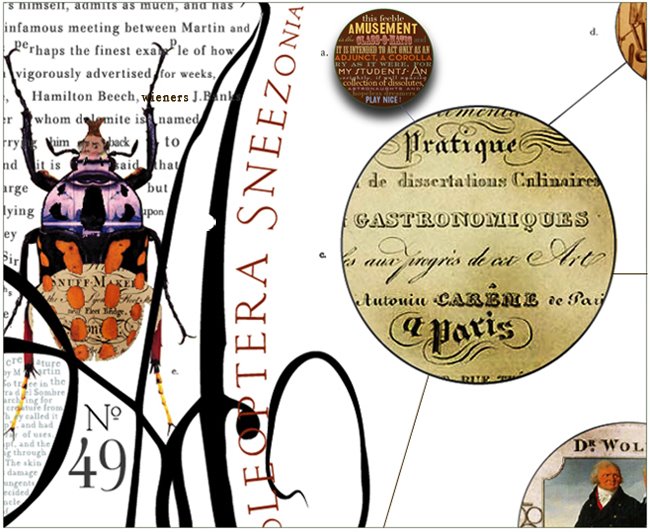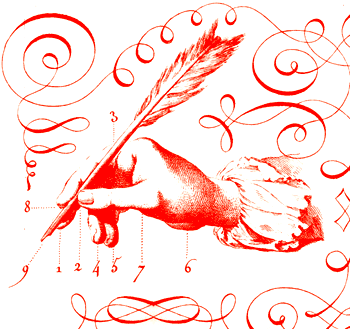So is Dada defined by André Breton. Marcel Duchamp also said that " Dada is nevertheless shit and alligator piss " so it's reasonable to surmise that there wasn't allot of theoretical continuity in the movement. Even so , Dada and its celebrants, have had a profound and lasting effect on the way artists express, and perhaps more importantly, think about art.
As their antecedents the Impressionists had before them, in the famous - " Salon De Refuses " exhibit of 1863 - the artists challenged and enthusiastically rejected the formal and they felt, restrictive attitudes governing how to make art, and in fact, what a proper subject for art was. I think this kind of debate is healthy, and every generation of artists should question in some manner, aesthetic authority. Just like Mozart, Andy Warhol and Sid Vicious did, you punks.
This is not to say that Dada is definable, for it was one of the primary goals of Dada to avoid the labeling and legitimizing of the establishment. Early on in the development of the trend, Hugo Ball made it quite clear, "How can one get rid of everything that smacks of journalism, worms, everything nice and right, blinkered, moralistic, Europeanized, enervated? By saying Dada..."


The DADA movement started in Switzerland, roughly between the years 1916 and 1920, and was geared to protest World War 1. Because Switzerland was a neutral country during the war, and they strongly opposed it, the Dadaists felt the best way to help stop the horror of war - was to make an anti art... an art, which rejected the values that traditional art had expressed, and which the Dadadist's felt along with everything else, had contributed to war.
The movement is recognized as the quintessential anti-art movement and its aim was, seemingly, to have no meaning - to embrace anarchy and absurdity - because it attacked and rejected the materials and notions of what was at the time considered - high art. The movement mainly included visual arts, poetry, theater and graphic design, but also included activities such as public demonstrations.
Some of the original dadaists included - Hannah Hoch, Marcel Duchamp, John Heartfield, and Kurt Schwitters. By definition DADA art is not considered art per se, and the DADA artists not artist because almost anything can be considered DADA. Although this may be true , DADA art is said to have laid the groundwork for such movements as Cubism and Futurism, and it also said to have made assemblage, collage, photomontage, and ready made objects more socially acceptable as art objects.

Dada was as much a cultural movement and developed originally from a literary roots, after the poet Hugo Ball opened a gathering place for young poets, painters and musicians called Cabaret Voltaire.
Dada writers and artists were concerned with shock, protest and nonsense.
Note: Nonsense might seem an odd subject for art, but in some contexts, its perhaps a reasonable resposnse to the times. As an example, during the rigid cultural pretensions of Neo-classicism 19th cent. France , or the insecurities of pre-war Europe, or even the pressurecooker of 1950's suburban America, .... nonsense made perfect sense. .....
The Dada movement claimed to be anti-art and had a strong nihilistic/anarchic element. Dadaists didn’t even agree on the origin of the name Dada. One version says the movement was named when a Dadaist opened a French-German dictionary and randomly selected the word dada, meaning a child’s hobbyhorse.
One of Dada’s most prominent visual artists was the French painter Marcel Duchamp who outraged many when he painted a mustache on a reproduction of the Mona Lisa. Dada quickly spread throughout Europe as Dadaists said they were not creating art but mocking and defaming a society gone insane, even though many Dada artists produced very meaningful visual art and dramatically influenced graphic design.
Also Dada artists claimed to have invented photo-montage, which was a technique of manipulating photographic images to create jarring juxtapositions and chance associations. Through spontaneous chance actions with planned decisions,
Dadaists helped strip typographic design of it’s traditional precepts. Also continuing cubism’s concept of letterforms as concrete visual shapes, not just phonetic symbols.



to be discussed in class, both 1+2. Zo, do your WERK !



No comments:
Post a Comment